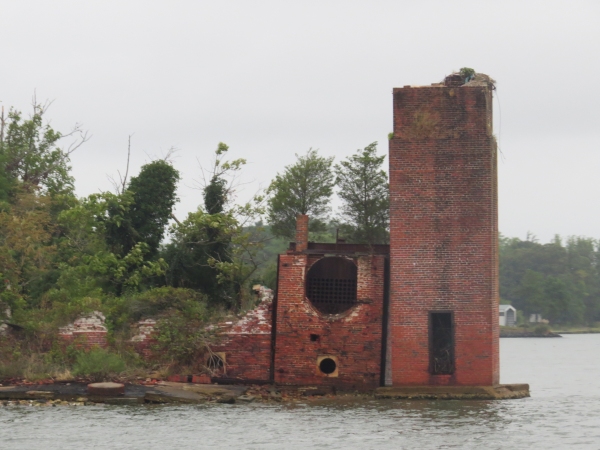Menhaden? Who knew?
/Reedville, Virginia
Have you ever even heard of menhaden? We certainly hadn't until we visited the Reedville Fishermen's Museum in Reedville, Virginia the other day. Menhaden, also known as mossbunker, and bunker, are small, smelly, oily, bony forage fish that swim in great schools and made millionaires of Reedville's 19th century sea captains.

When we sailed up Cockrell Creek a few days ago, we passed by several large fishing boats and wondered what kind of fishing they did.

Further up the creek, we saw what appeared to be a large, solitary chimney and on the opposite shore, the ruins of several brick buildings. We had no idea about their history, but after a visit to the Reedville Fishermen's Museum, we became enlightened.

Though the museum offers lots of interesting displays and information about the area's history, the biggest revelation for us was its video, displays and exhibits specific to the menhaden industry. According to The House and Home magazine, “At one time in Reedville’s history, fifteen different fish factories lined the shores of Cockrell’s Creek [those ruins we saw], which earned Reedville the grand distinction as one of the most affluent towns, per capita, in the entire United States.” Evidence is Elijah Reed's house still standing grandly and proudly on Main St.

A quote from noted conservationist, Rachel Carson, states “ … almost every person in the United States has at some time eaten, used or worn something made from menhaden.” Really? Like what, for instance? Well … fish oil, pet foods, chicken feed and fertilizer for a start. Because it's high in Omega-3, it is used in dietary supplements. It's also a raw material in the cosmetics industry for making lipstick. Even Reedville's water tower reminds us that menhaden was the backbone of this once-thriving community.

I found an interesting website “Six reasons why Menhaden are the greatest fish ever fished”. It opened our eyes to even more menhaden facts. “Menhaden, Brevoortia tyrannus, is, without a doubt, the single most important fish in the western Atlantic. This oily filter-feeder swims in schools so large that they block the sun from penetrating the water’s surface as it regulates ocean health.”

More interesting trivia from the same internet article ... “Native Americans (Narragansetts) in precolonial America called the fish ‘munnawhatteaug,' which translates to ‘fertilizer.' In a legend about the Plymouth Colony, a local tribe taught the first settlers to plant a fish with their corn to make it grow stronger.” Yup, that fish was a menhaden. Menhaden were also known as poghaden, bony-fish, whitefish, pogy, fat-bat, and bugheads. Who knew?
Okay … enough fish stories. We're slowly heading up the Potomac River towards Washington, DC. Come share the ride!

